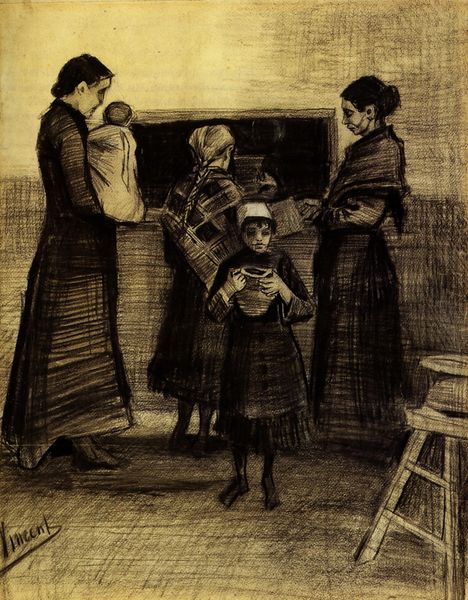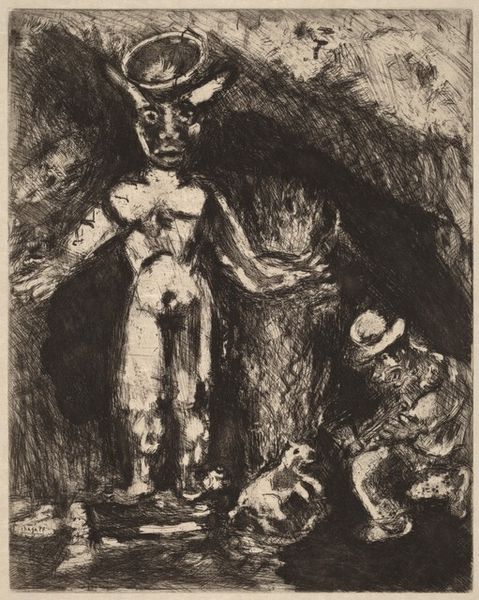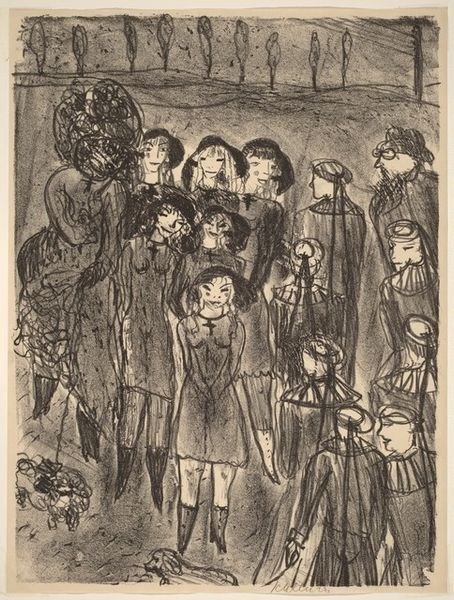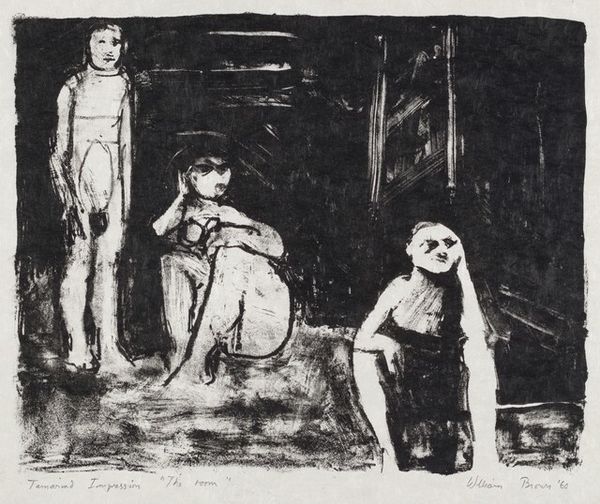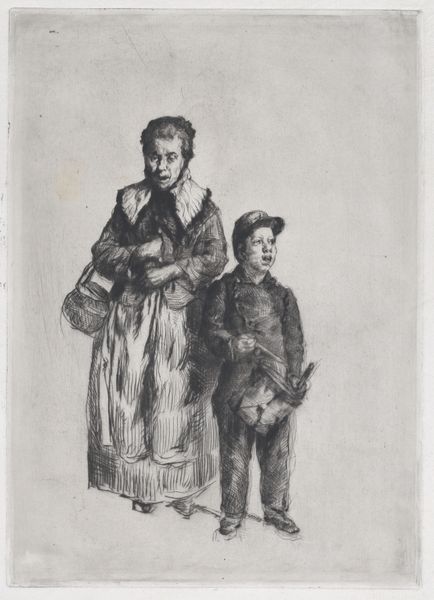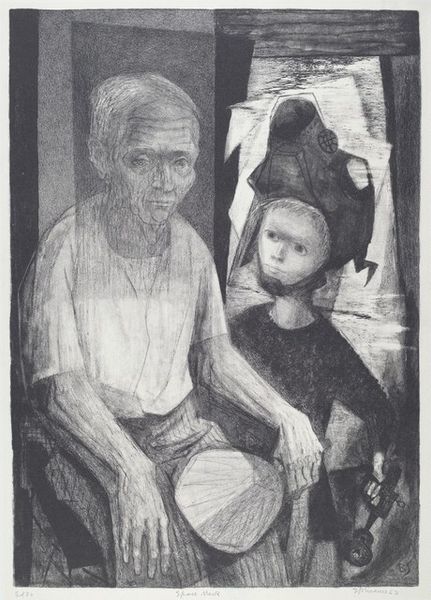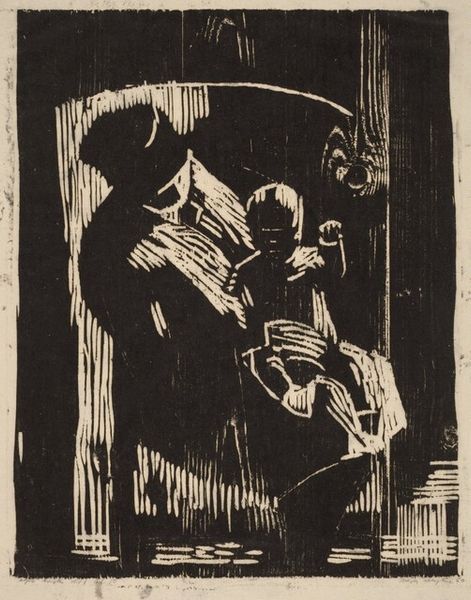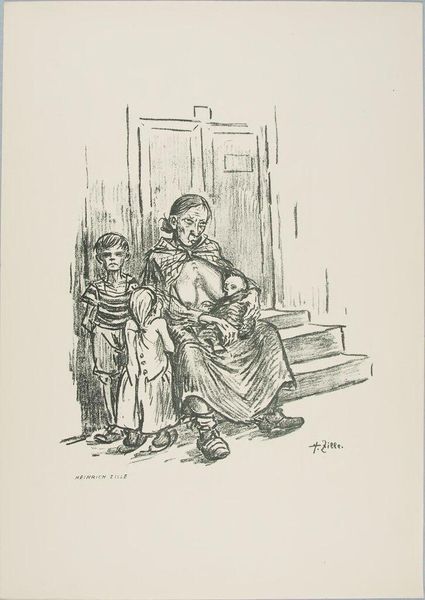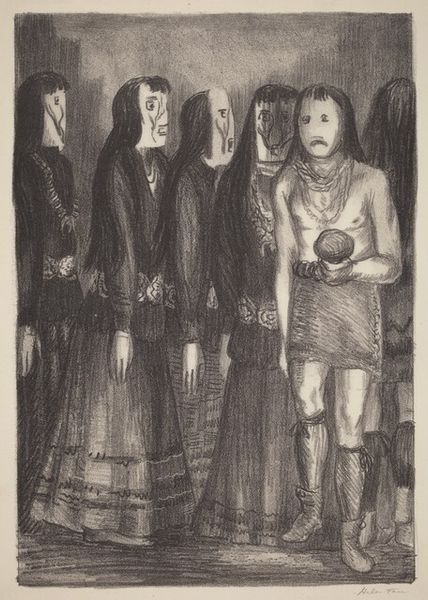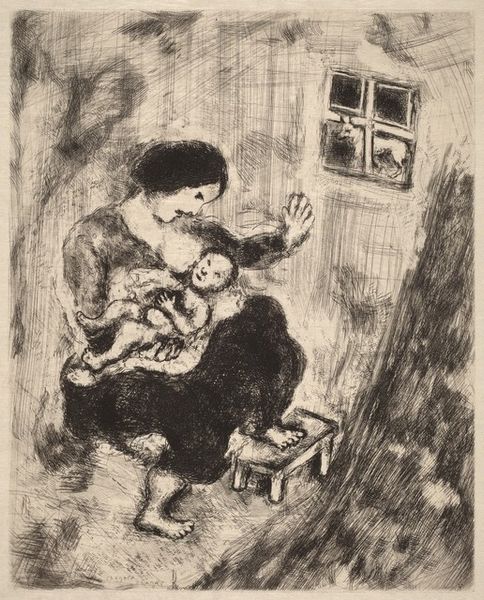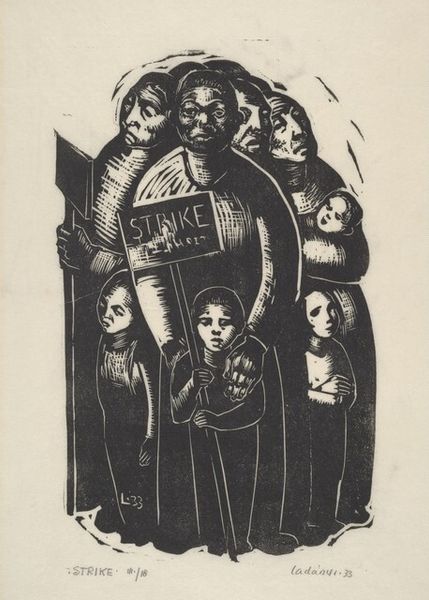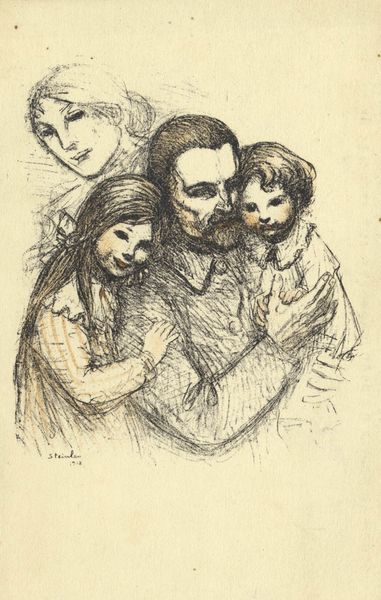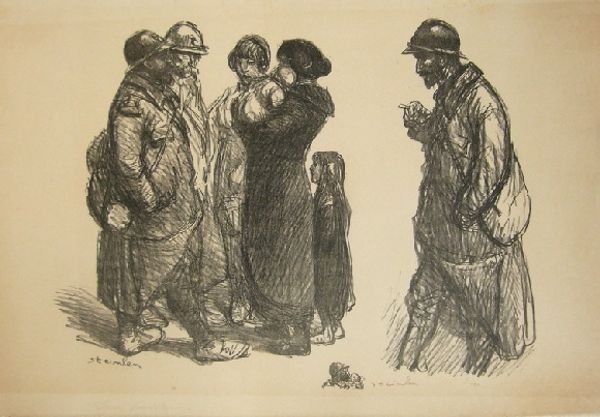
drawing, print
#
portrait
#
drawing
# print
#
soviet-nonconformist-art
#
portrait drawing
#
genre-painting
Copyright: National Gallery of Art: CC0 1.0
Curator: Here we have "The Tailor's Family" by Anatoli Lvovich Kaplan, completed between 1957 and 1961. Editor: Gosh, it's got that shadowy, half-remembered dream quality to it, doesn't it? All those nervous little lines creating depth but also, like, a kind of anxiety. Makes you wonder what’s going on just outside the frame. Curator: Indeed. Kaplan uses the graphic medium—likely lithography, given the textures—to create a sense of both intimacy and social commentary. The stark contrast and hatched lines form the figures, but there's a visual tension. Editor: Absolutely. That central figure of the father—almost like a dark tower—sort of anchors everything, doesn’t he? But everyone looks a bit… disconnected. Is that weariness in the mother's face, or something more profound? Even the dog seems a little lost. Curator: The artist likely intends to evoke complex emotions within the domestic space. This work belongs to the Soviet Nonconformist art movement, representing the rejection of Socialist Realism. The seemingly simple portrayal of family life carries subversive weight. Notice how Kaplan uses the hanging clock and lamp to represent not only time, but a sense of domestic fragility? Editor: That's it. The clock almost seems to be falling! The details pull you in. Is the lack of clarity intentional—are the specifics suppressed to hint at the universal experience of struggle under a certain socio-political pressure? Curator: Precisely. Kaplan leverages universal themes such as family and work, yet destabilizes idealized representations through deliberate formal choices to signify something more… unspoken. Editor: Makes you think about what family really means in that context, right? Almost like a silent scream in the samovar. Okay, maybe I'm getting carried away. Curator: Not at all. Your visceral engagement enriches the formal interpretation. This piece isn't merely representational; it uses composition to express resistance and quiet dignity. Editor: Yeah. Now I’m really seeing the formal elements contributing to something profound beyond the surface depiction of the family itself. Very impactful, Mr. Kaplan!
Comments
No comments
Be the first to comment and join the conversation on the ultimate creative platform.
